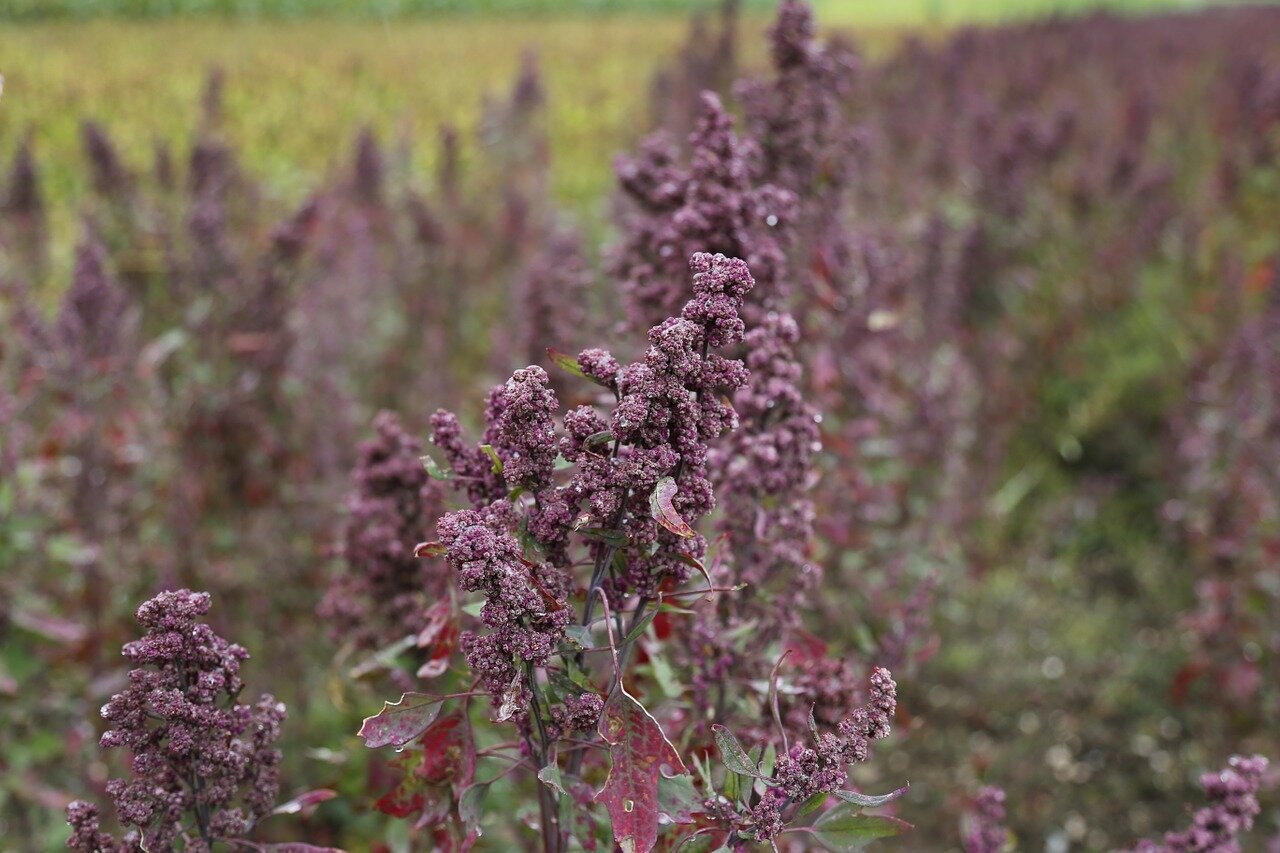18 May 2019. The fifth international “Fascination of Plants Day”, a global event, under the umbrella of the European Plant Science Organisation, which attracts participation from scientists all over the world. The goal of the event is simple – encouraging people around the world to take an interest in plant science.
Plant science is vital for our food security and sustainable agriculture. It has given us the Green Revolution and has made a countless scientific breakthrough that has broken the disciplinary barrier to revolutionise science and innovation. Despite all this, there isn’t enough appreciation for plant science both from the public and scientific community.
Without plants, we would all die. But plants go on about their lives in an unassuming way, and it’s all too easy to take them for granted. An event like Plant Day is really important to raise awareness of the great work that plant scientists are doing around the world and to highlight how much plants influence our lives.
I love plant sciences and spent almost a decade working in plant science. So on Plants Day, here’s a list of five fascinating topics in plant science that I have covered in my blogs so far.
Plant defence
Our ability to move means that we can protect ourselves from predators and take precautions against diseases. We’re also able to build shelters to protect us from the harshest of environments. But plants can’t move – they’re constantly exposed to predators and pathogenic microbes. And come hot, cold, rain or drought, plants face it head on (or rather root and shoot on). Their very existence depends on adaptation and survival.
That’s why plants have evolved to protect themselves from these threats. And the intermolecular war between the plant and microbes is a fascinating one. Scientists term this attack vs defence encounter as plant-pathogen interaction. Here, I’ve described the intriguing molecular warfare between plants and pathogens, which involves multilevel battles that either side could win.
Plants strategically place several obstacles to trap or prevent pathogens from entering the plant. Microbes have their own tricks that they use to fool plants and invade them. Even when pathogens enter the plant, they’re not guaranteed to win the war. Plants still have a few defence strategies, which could be as drastic as controlled cell death around the region that microbes invade. This will essentially starve the pathogen to death. Alternatively, the pathogen will defeat all of the plant’s defence and infect the plant. See my blog here, or read this review for more information (free version here).
Parasitic plants
We tend to see plants as great producers that keep everything else on the food chain alive. Photosynthesis is one of the key processes in plants, where they use water and carbon dioxide to make sugar. Plants then use the sugar for their development, as well as to produce fruits and seeds. Plants sit at the bottom of the food chain and feed several species. Our survival also depends on photosynthesis.
But not all plants are these primary producers that only give to the rest of the population: some also take back. Plants like the Venus flytrap prey on insects; mistletoes are parasitic and grow on other plants. But Venus flytrap and mistletoe are also producers: they still produce food through photosynthesis.
There are plants like Monotropa uniflora that are non-photosynthetic therefore are entirely reliant on other organisms for their growth and development. Monotropa uniflora is one of three thousand non-photosynthetic plant species. These plants are white in appearance as they lack chlorophyll, the green pigment that drives photosynthesis. Due to its white appearance, Monotropa uniflora is also known as the ghost plant or the Indian pipe. Read my blog about this fascinating plant here.
Plant hormone auxin
Plants adapt their shape and size, and even their development according to their external environment. If you grow two genetically identical plants in a different environment, they will look completely different. Plants might have a different number of branches, leaves or vary in sizes, but it’s important to note that the leaves shape or the branches and lateral roots angles are roughly the same in a plant species.
Remarkably, plants ability to recognise gravity, maintain architectural shape, form new organs and numerous other growth and development is mostly controlled by the plant hormone auxin. In this blog, I explain some processes auxin influence in plant development, including shaping a plant.
One of the things that have fascinated me is how plants know where to grow. Have you ever wondered why the root always grow down into the ground, whereas the shoots grow up towards the sky – no matter what way you place your seed? Plant hormone auxin also influences the plants’ gravity response. How auxin spreads inside the root, and the shoot directs root growth towards the gravity and shoot away from the gravity. See my 100-word explainer on how plants recognise gravity?
For my PhD, I studied the function of a chemical called TENin1, which makes plants lose their perception of gravity. See my blog on how TENin1 disorientates plants causing them to grow in random directions. And understanding how plants recognise gravity is vital if we are to grow plants in the microgravity of space.
Only when we fully understand the influence of auxin and related components in plants gravity recognition, will we know how to grow effectively in microgravity. See my post here on how auxin research could one day allow us to grow a range of crops in microgravity and enable us to explore other planets.
Indoor farming
The world population continues to rise and rise and is projected to be over 9.8 billion by 2050. As the population grows, urban areas will consume farmlands around the world to accommodate the requirements of larger communities. With less cropland available and a bigger population to feed, we need to identify new ways to grow food. Could we grow our food in megacities? In this post, I describe how indoor farming can help produce food in the densest of urban areas. Rather than taking ample land to grow food, we can utilise the vertical spaces to grow food inside tall, rising buildings. Indoor farming uses electricity to produce food, but a significant percentage of electricity currently comes from non-renewable sources. So, unless renewable energy power indoor farms, they won’t be sustainable.
Indoor farmers traditionally grow food of low calorific value such as leafy salads. Now a new indoor farming method reduces the harvest time of important world crops like barley by 2-3 times. Under standard conditions, indoor farmers harvest barley and wheat 2-3 times a year. However, “speed breeding” enables 4-6 harvests of these crops per year. Increasing the harvest time of crops could bring significant benefits and improve productivity to urban farming. Additionally, it would also fast-track fundamental plant science research that usually takes place in glass houses, eventually accelerating the translation of research into field trials and ultimately improving our crop varieties. See my post on how speed breeding could benefit both agriculture and plant science research.
Plant breeding
Agriculture keeps billions alive across the globe. The success of the Green Revolution means that some high-calorific value crops grow with high efficiency around the world. New varieties of wheat and rice produced during the Green Revolution have saved millions of lives. And this was only possible due to plant breeders using cutting-edge science to develop new plant varieties. Here’s my blog on how science prevented mass famine in the past and only science will avoid future famines – the way the industry functions is driving us to mass produce some crops. Rice, wheat and maize provide over half of the plant-derived calories worldwide. History tells us that being highly dependent on just a handful of plants could be catastrophic.
As we plant pests and diseases continue to evolve, and with the ongoing climate and ecological breakdown, we need to find plant varieties that will withstand these stresses to continue to feed the world. And different plant breeding technologies is vital for us to produce these crop varieties to feed future populations against these adversities. Read my post here, where I describe most commonly used plant breeding techniques to generate new, improved crop varieties.
As I mentioned earlier, food diversity is a big problem around the world. Researchers around the world have been using biotechnology to fast-track the production of better crop varieties. Gene editing technology in plant breeding could especially improve agricultural biodiversity. Here’s my blog on how genetic engineering can improve agrobiodiversity.
Agriculture keeps all of us alive, but it’s also resource intensive. Ninety-seven percent of all human water goes towards producing food. Cities around the world are increasingly facing droughts and water scarcity. Therefore, efficient agriculture can save us water and perhaps prevent future water wars. Here’s my piece on how high-tech agriculture can save us water.
These were some of my favourite blogs at www.talkplant.com that I wished to highlight on Plant Day. What’s your favourite plant science topic or your favourite plant?



Leave a Reply